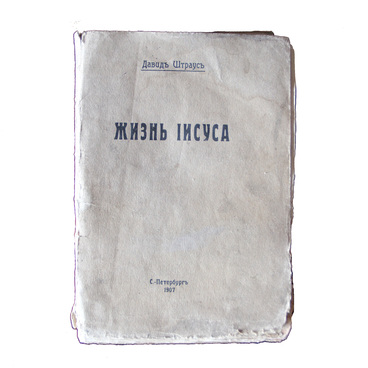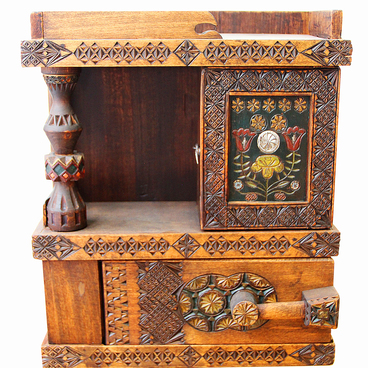The first small glass vessels appeared at the end of the 4th century BC in ancient Egypt and Syria. They were used to store incense, lipsticks and facepaints. By the 1st century BC, the blowing-iron had been invented in Babylon, which made it possible to produce glass bottles of various shapes.
Pharmacy bottle
Время создания
Late 19th - early 20th century
Размер
19x7,5x2,5 cm
19х7.5х2.5 cm
19х7.5х2.5 cm
Техника
Glass
Выставка
0
Открыть в приложении#1
Pharmacy bottle
#3
#6
The centre of the glass production in the Middle Ages was the Venetian island of Murano. It was there that Murano glass began to be made, the production technology of which was later borrowed by other countries.
#5
Pharmacy shops, which actively used glass bottles for medicines, appeared in the Orient by the 8th century, and in European countries — closer to the 12th century. Initially, European pharmacies were located at monasteries, and medicines were poured into clay and wooden pots. The heyday of secular pharmacies came in the Renaissance era, by the 15th -16th centuries.
#7
In 1611, in England they invented a glass flashing furnace, which was heated with black coal. This cheapened and accelerated the manufacturing process, and glass bottles got widespread use. It was the 17th-century London that introduced glass bottles for elixirs, pills and balms, on which they glued labels with names.
Glass bottles became a symbol of pharmaceuticals. There appeared bottles of various shapes: roundish, elongated, with thin narrow necks resembling swan necks. The most common were pear-shaped and bulb-shaped bottles. They were put on shelves and hung on windows to attract the attention of buyers. In the 17th -19th centuries, shop-windows began to display carboys — bottles made of coloured glass.
#8
In 1824, pressed glass was invented. It was placed in a special blank where under the pressure of the press the product of the desired shape was obtained. In Russia, this technique was mastered in the 19th century. Bottles made of such glass had several distinctive features: sloping shoulders, rounded edges, convex frames, inscriptions and necks with a special drain for a more convenient dosage of drugs.
#9
The museum collection contains more than 10 pharmacy bottles. This exhibit is made of transparent brown glass in the late 19th — early 20th centuries. It is decorated with a convex double-headed eagle and embossed inscriptions: Аптека (Russian for pharmacy) and Pharmacie. The front of the bottle has illegible letters КнО, and the bottom carries the numbers 250 and 8: most likely it is the volume of liquid in the bottle given in millilitres and ounces.
читать дальшескрыть
00:00
00:00
1x
Pharmacy bottle
Время создания
Late 19th - early 20th century
Размер
19x7,5x2,5 cm
19х7.5х2.5 cm
19х7.5х2.5 cm
Техника
Glass
Выставка
0
Открыть в приложении
Поделиться


